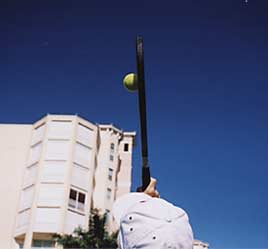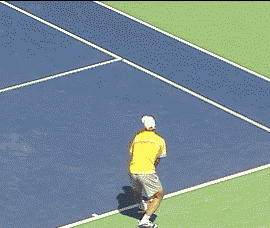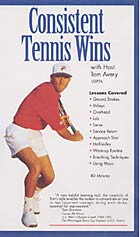|
TennisOne QuickTips The Topspin Serve Tom Avery
A topspin serve is a great asset to have in your repertoire. Why? When you make a ball spin forward it creates air pressure on top of the ball, pushing it down. The faster you make it spin forward, the more air pressure you create, pushing it down sooner. Therefore, if you're hitting your serve long, create more topspin which will push the ball down into the service box. However, a topspin serve is not one of the easiest strokes to master; it requires patience and a lot of practice. Typically, when players first try and hit a topspin serve they hit the ball with the edge of the frame. Don't get discouraged, that even happens to top pros once in a while.
When hitting a topspin serve the edge of the frame approaches the ball as in this photo on the left (below). This is one reason the topspin serve is tough to master. Occasionally, you will even see a top pro frame the ball when attempting a topspin serve. That is because the edge of the frame must pass very close to the ball before the strings make contact with the upward and forward brushing movement.
On the photo on the right (above), the edge or frame of the racquet has passed by the ball and now the strings make contact, the racquet is still rising at the moment of contact. At this point the wrist is snapping up towards the sky.
At this point the ball is gone, yet the wrist is continuing to snap straight up towards the sky as Pat Rafter demonstrates in the annimation.. For a left-hander the strings would contact the ball at the five o'clock position and brush up to the eleven o'clock position. Your comments are welcome. Let us know what you think about Tom Avery's article by emailing us here at TennisOne.
Tom Avery is the author of the series, Consistent Tennis Wins. Learn why unforced errors occur in your game and how to train your body to play more consistent tennis in Consistent Tennis Wins with Tom Avery. In this 80 minute production, Avery covers groundstrokes, volleys, overheads, lobs, serves, approach shots, half-volleys, the correct warm-up, breathing techniques and more.
Price: $44.99 DVD $39.99 VHS |






